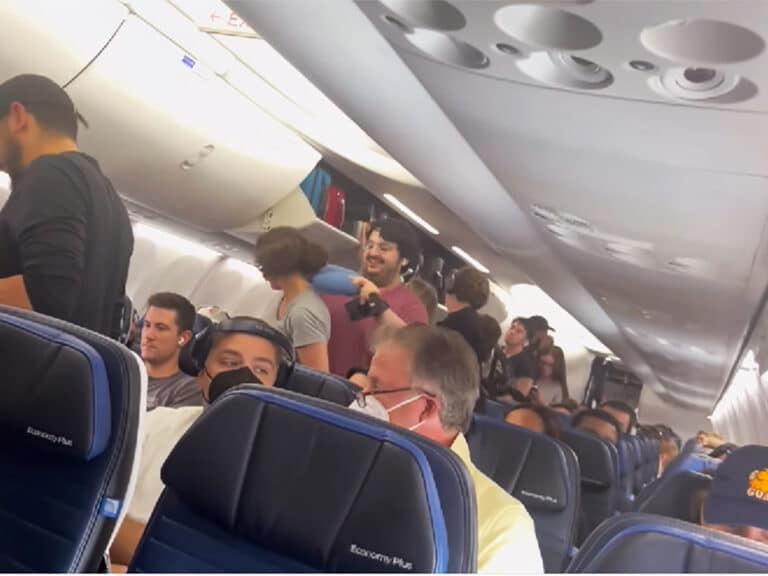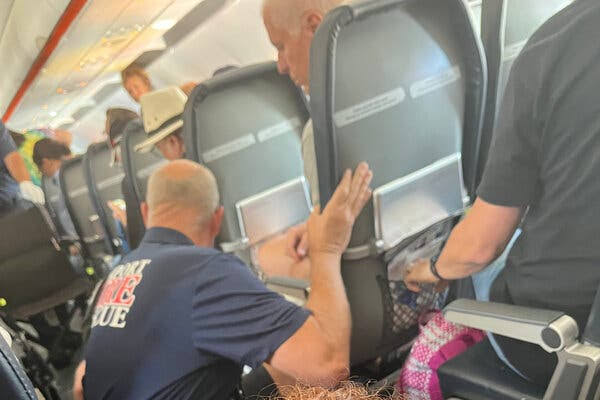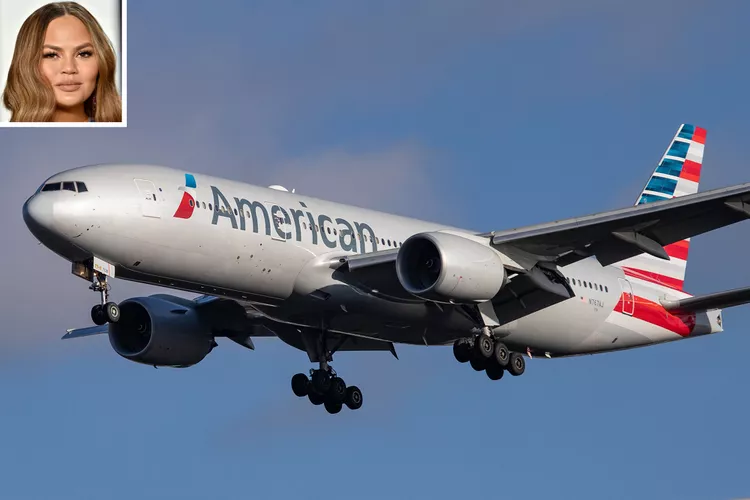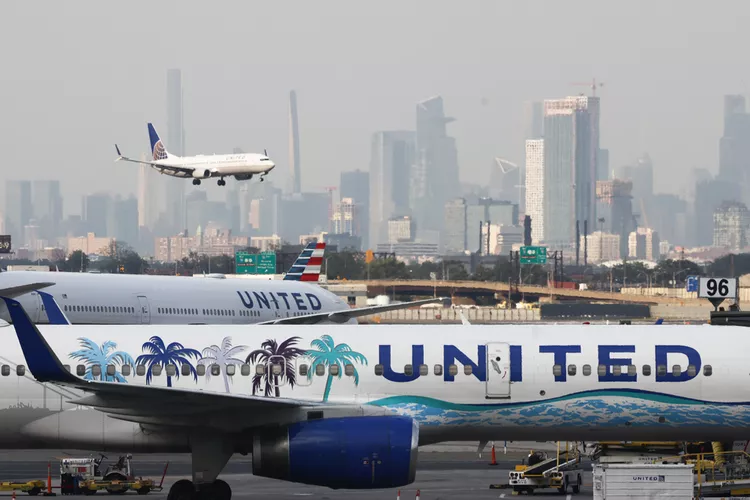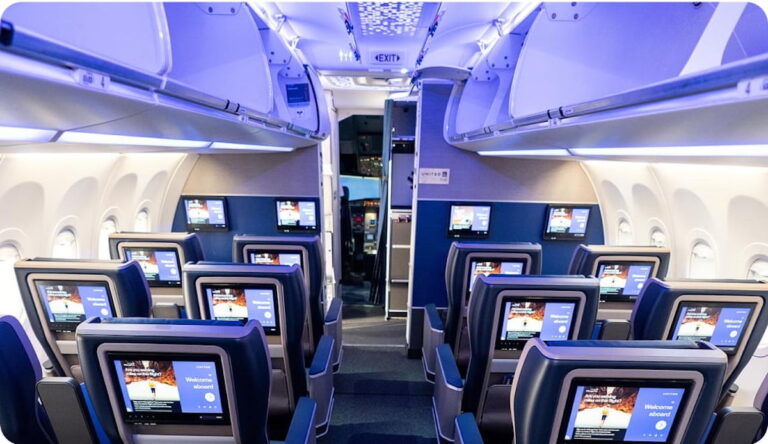American Airlines passengers stranded for 20 hours in Bermuda airport
Passengers of an American Airlines flight from Miami to London were forced to wait some 20 hours in Bermuda after the aircraft was diverted due to a “possible mechanical issue,” including smoke that was reported in the cockpit, according to media accounts.
Angry vacationers returning to the United Kingdom posted photos online showing passengers sleeping on the floor of the Bermuda airport before dawn on Monday local time.
The passengers covered themselves with blankets taken from the plane because the air conditioned terminal was too cold, according to reports.
American Airlines told the British wire agency Press Association that a suspected mechanical issue forced the pilot to land the plane in Bermuda, which is a British island territory in the middle of the Atlantic Ocean.
Flight AA38 bound for London’s Heathrow was diverted to Bermuda just three hours after taking off from Miami International Airport at around 7:30 p.m. local time on Sunday.According to the PA news agency, US federal labor regulations which required rest for the flight crew combined with local COVID-19 laws that did not allow passengers to leave the vicinity of the airport meant that the travelers needed to wait in Bermuda.
Passengers vented their frustrations as they were forced to wait some 10 hours before the airline provided them with food.The airport facilities are quite meager as there were no available showers and the bathrooms had just eight working toilets.
Jonathan Lo, a 35-year-old UK resident, was returning home with his new fiancée, Laura Day, was “dozing off” during the flight when the captain told passengers there was “an indication of overhearing electronics.”
“A little later on it was backed up by a further announcement to say that, actually, they could smell smoke in the aircraft cockpit,” Lo told Birmingham World.
Lo said when the plane landed in Bermuda, it was “quite a dramatic scene” as fire trucks followed the aircraft as it was taxiing into the terminal. But that’s when the nightmare started.
After the passengers disembarked, they were notified three hours later that they would not be able to fly and would have to sleep at the airport.
It took until 12:30 p.m. local time for airport staff to provide the passengers with food. One Twitter user, who described being stuck in the airport as akin to “prisoner life,” posted a video showing a plate of eggs and sausage that was served to one of the passengers.
“That’s a whole whopping 10 hours after people have landed with children and were hungry,” Lo said.
“(We feel) abandoned by the airline really… literally in the middle of the Atlantic.”
Passengers aboard American Airlines Flight AA38 from Miami to London experienced a harrowing ordeal when their aircraft was unexpectedly diverted to Bermuda due to a potential mechanical issue, including reports of smoke in the cockpit. This unforeseen event forced approximately 300 passengers to endure a grueling 20-hour wait in Bermuda’s modest airport facilities under challenging conditions.
The journey started without incident, with the aircraft departing Miami International Airport around 7:30 p.m. local time on Sunday. However, just three hours into the transatlantic flight, the crew detected a potential problem with the plane’s electronics. Jonathan Lo, a UK resident, recounted the alarming experience to Birmingham World, noting that the initial announcement about overheated electronics was soon followed by a more concerning update about smoke in the cockpit. The decision was made to divert to Bermuda, a British territory in the middle of the Atlantic Ocean, for an emergency landing.
As the plane landed, passengers witnessed a dramatic scene: fire trucks trailing the aircraft as it taxied to the terminal, prepared for any emergency. Despite the swift and cautious landing, the relief was short-lived. The true test of patience and endurance was just beginning for the passengers.
Once disembarked, passengers were informed that they would not be able to leave the airport premises. The combination of U.S. federal labor regulations, which mandated rest for the flight crew, and local COVID-19 restrictions, which prevented passengers from leaving the vicinity of the airport, left travelers stranded. This regulatory bind meant that passengers were confined to the airport, which lacked adequate facilities to accommodate such a large group for an extended period.
The terminal’s meager amenities quickly became apparent. With no available showers and limited bathroom facilities—only eight functioning toilets for hundreds of passengers—discomfort and frustration grew. The air conditioning in the terminal exacerbated the situation, leaving passengers shivering in the cold. In an attempt to stay warm, many resorted to using blankets taken from the plane, laying them on the terminal floor in a makeshift bedding arrangement.
As hours dragged on, the passengers’ frustration turned to anger and despair. Social media posts from stranded travelers painted a vivid picture of the situation. Images of passengers sleeping on the floor before dawn on Monday local time spread online, capturing the bleak reality of their predicament. One Twitter user likened the experience to “prisoner life,” sharing a video of the scant meal provided by airport staff—a plate of eggs and sausage served hours after landing.
Jonathan Lo, who was traveling with his new fiancée, Laura Day, described the prolonged wait as a nightmare. Initially, passengers were hopeful that the delay would be short-lived. However, after waiting for three hours, they were informed that the aircraft would not be departing anytime soon and that they would need to spend the night at the airport. It wasn’t until 12:30 p.m. local time, nearly 10 hours after the emergency landing, that airport staff began distributing food. This delay in providing basic necessities only fueled the passengers’ sense of abandonment.
Parents with young children faced particular challenges. Ensuring their children were comfortable and fed in such conditions was a significant concern. The lack of adequate facilities, combined with the prolonged wait and uncertainty, added to the stress and anxiety of the situation. For many, the ordeal felt like being “abandoned by the airline…literally in the middle of the Atlantic,” as Lo expressed.
American Airlines, in a statement to the British wire agency Press Association, acknowledged the mechanical issue that necessitated the diversion to Bermuda. The airline expressed regret for the inconvenience caused to passengers and emphasized the importance of safety in making the decision to land. However, this did little to placate the anger and frustration of those who had to endure the uncomfortable wait.
The incident highlights several critical issues within the airline industry, particularly concerning emergency preparedness and passenger care during unforeseen delays. While safety must always be the top priority, the experience of Flight AA38’s passengers underscores the need for better contingency plans to support travelers during extended delays in remote or inadequately equipped locations.
Moreover, the situation raises questions about the adequacy of current regulations governing crew rest and passenger care during emergencies. While these regulations are in place to ensure safety, their implementation in this case left passengers in a precarious situation, without adequate shelter, food, or comfort. Balancing regulatory requirements with the immediate needs of passengers in such scenarios remains a challenge that airlines and regulatory bodies must address.
In the aftermath of the incident, affected passengers likely sought compensation and an explanation from American Airlines. The ordeal serves as a stark reminder of the unpredictability of air travel and the importance of robust support systems for passengers during emergencies.
For Jonathan Lo and Laura Day, the incident was a stark contrast to the joyful occasion they had just celebrated—their engagement. The couple’s experience, along with that of their fellow passengers, is a testament to the resilience and patience travelers often must muster in the face of unexpected disruptions. While the memories of their Bermuda layover may not be fond ones, it is a chapter in their lives they will undoubtedly recount for years to come.
As the aviation industry continues to evolve, lessons learned from such incidents can pave the way for improved passenger experiences during emergencies. Ensuring that travelers are adequately cared for, even in the most challenging circumstances, is a goal that must be pursued with diligence and compassion. For the passengers of Flight AA38, the hope is that their ordeal will lead to positive changes and prevent future travelers from facing similar hardships.

